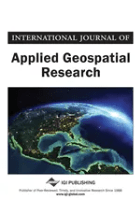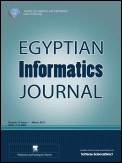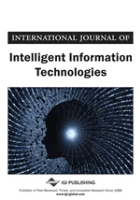
GEOINFORMATICA
Scope & Guideline
Exploring the Intersection of Geography and Information Systems
Introduction
Aims and Scopes
- Spatial Data Analysis:
GEOINFORMATICA emphasizes methodologies for analyzing spatial data, incorporating statistical, machine learning, and deep learning techniques to extract insights from geographical datasets. - Geospatial Artificial Intelligence (GeoAI):
The journal explores the application of artificial intelligence in geospatial contexts, including the development of algorithms and frameworks that leverage machine learning for spatial data interpretation. - Mobility and Transportation Analytics:
Research on mobility data, including traffic forecasting, public transportation optimization, and ride-sharing systems, is a core focus, reflecting the increasing importance of understanding human mobility patterns. - Remote Sensing and Image Processing:
GEOINFORMATICA publishes studies on remote sensing technologies, including image classification and analysis, emphasizing the integration of geographical information with satellite and aerial imagery. - Environmental Monitoring and Management:
The journal encompasses research on environmental applications, such as air quality assessment and disaster management, highlighting the role of geoinformatics in addressing environmental challenges. - Interactive Systems for Spatiotemporal Data:
There is a strong focus on developing interactive systems and tools for managing and querying spatiotemporal data, enhancing user engagement and data accessibility.
Trending and Emerging
- Deep Learning in Geospatial Contexts:
There is a notable increase in the application of deep learning techniques for various geospatial problems, including trajectory analysis and image classification, showcasing the potential of AI in geoinformatics. - Big Data Analytics for Mobility:
The trend towards analyzing big data, particularly in urban mobility contexts, is on the rise, with research focusing on the integration of large datasets to improve transportation systems and urban planning. - Real-time Spatiotemporal Analysis:
Research on real-time data processing and analysis for applications such as traffic management and environmental monitoring is gaining traction, emphasizing the need for immediate insights and decision-making. - Cross-domain Applications of Geoinformatics:
Emerging studies are exploring cross-domain applications, such as integrating geoinformatics with health data for public health monitoring, indicating a trend towards interdisciplinary research. - Sustainable Development and Urban Resilience:
There is a growing focus on how geoinformatics can contribute to sustainable development goals and urban resilience, reflecting global priorities in environmental management and urban planning.
Declining or Waning
- Traditional GIS Applications:
Research focused solely on traditional geographic information systems (GIS) without integration of advanced analytics or machine learning has decreased, as the field moves towards more dynamic and interactive applications. - Basic Spatial Query Techniques:
There is a waning interest in basic spatial query methodologies that do not incorporate modern computational techniques or advanced data structures, reflecting a shift towards more complex analytical frameworks. - Static Environmental Models:
Studies that rely on static models for environmental monitoring, without considering real-time data integration or dynamic modeling approaches, appear to be less frequent as the community seeks more responsive solutions. - Generic Data Processing Algorithms:
Publications that focus on generic algorithms for data processing without specific application contexts or innovative adaptations are becoming less common, as researchers aim for more specialized and impactful contributions.
Similar Journals

International Journal of Applied Geospatial Research
Transforming data into actionable knowledge across disciplines.International Journal of Applied Geospatial Research is an esteemed publication dedicated to advancing the field of geospatial research. Published by IGI Global, this journal provides a platform for innovative studies from 2010 to 2024 that encourage multidisciplinary contributions across Earth and planetary sciences and geography. While currently not offering open access, the journal's focus on applied research ensures that it remains highly relevant to both academics and industry professionals alike. With an ISSN of 1947-9654 and an E-ISSN of 1947-9662, it has been indexed in various databases, reflecting its emerging significance with rankings such as Q4 in Earth and Planetary Sciences and Geography according to Scopus, placing it at the intersection of critical research and practical application. Researchers, professionals, and students can expect insightful articles that enhance understanding and drive innovation in geospatial applications essential for informed decision-making in a rapidly changing world.

Revue Internationale de Geomatique
Innovating Spatial Data Solutions for a Changing WorldRevue Internationale de Geomatique (ISSN: 1260-5875, E-ISSN: 2116-7060) is a prestigious journal published by TECH SCIENCE PRESS, dedicated to advancing the field of geomatics. This journal serves as a vital platform for disseminating significant research findings, cutting-edge methodologies, and innovative applications within the realm of spatial data and technology. With an emphasis on interdisciplinary studies, it fosters collaboration among researchers, professionals, and students across various domains, including environmental science, urban planning, and geographic information systems (GIS). Although not an open-access journal, Revue Internationale de Geomatique maintains a rigorous peer-review process ensuring the publication of high-quality articles that contribute to the evolving landscape of geomatics. Given its relevance and commitment to scholarly excellence, this journal is a crucial resource for advancing knowledge and practices in the ever-growing field of spatial information science.

Egyptian Informatics Journal
Advancing Knowledge in Informatics and BeyondEgyptian Informatics Journal, published by CAIRO UNIV, FAC COMPUTERS & INFORMATION, is an esteemed open-access publication that has been making significant contributions to the fields of Computer Science, Information Systems, and Management Science since its inception in 2010. With its ISSN 1110-8665 and E-ISSN 2090-4754, the journal stands out for its commitment to disseminating high-quality research, evidenced by its Q1 ranking in 2023 across multiple disciplines in Scopus, including a notable ranking of #15 in Decision Sciences and Management Science, and #44 in Information Systems. The journal's coverage spans from 2010 to 2024, making it a vital resource for researchers and practitioners looking to stay abreast of contemporary advancements in informatics. With an increasing impact and a remarkably growing readership, the Egyptian Informatics Journal provides an indispensable platform for scholarly dialogue and innovation in informatics, catering not only to researchers but also to professionals and students aiming to excel in these rapidly evolving fields.

ACM Transactions on Spatial Algorithms and Systems
Unveiling Cutting-Edge Discoveries in Algorithmic Design.ACM Transactions on Spatial Algorithms and Systems is a premier academic journal published by the Association for Computing Machinery, focusing on advancements and innovations in spatial algorithms and their implementations across various domains. With an ISSN of 2374-0353 and E-ISSN 2374-0361, this journal showcases cutting-edge research in areas such as Discrete Mathematics, Geometry, and Information Systems, and consistently ranks in the Q2 category across multiple relevant fields as per the 2023 metrics. The journal is particularly notable for its impactful contributions to computer science applications, modeling and simulation, and signal processing, as evidenced by its impressive Scopus rankings. While it does not operate on an open-access model, ACM Transactions prioritizes accessibility to the latest findings for researchers, professionals, and students eager to explore and engage with spatial algorithms. By publishing high-quality, peer-reviewed articles since its establishment in 2015, the journal plays a critical role in advancing knowledge and fostering innovation in spatial systems research, making it an essential resource for academics and practitioners looking to stay at the forefront of this dynamic field.

Geomatik
Advancing geomatics for a sustainable future.Geomatik is a pioneering open-access journal dedicated to advancing the field of geomatics, encompassing disciplines such as geospatial data analysis, remote sensing, and geographic information systems. Founded in 2016 by the esteemed Geomatik Journal publisher, this peer-reviewed platform aims to disseminate high-quality research and innovative methodologies to a global audience. With its E-ISSN 2564-6761, Geomatik facilitates accessibility to cutting-edge studies that address vital challenges in environment monitoring, urban planning, and spatial data management. The journal not only encourages collaboration among researchers and practitioners but also serves as an essential resource for students seeking to deepen their understanding of geomatic sciences. Its commitment to open access fosters scholarly exchange and enhances visibility for authors, contributing to significant advancements within the geomatics community.

Earth Science Informatics
Pioneering Interdisciplinary Collaboration in Earth Science.Earth Science Informatics, published by SPRINGER HEIDELBERG, serves as a premier platform for disseminating innovative research in the realm of Earth and Planetary Sciences. With an ISSN of 1865-0473 and an E-ISSN of 1865-0481, this journal offers insightful contributions that leverage informatics and data-driven approaches to address complex geoscientific challenges. As a testament to its impact in the field, it ranks in the Q2 quartile and holds an impressive 73rd percentile rank among 195 journals in the broader **Earth and Planetary Sciences** category, as per Scopus rankings. This journal invites researchers, professionals, and students to explore and contribute to the growing body of knowledge that bridges the gap between informatics and Earth science, fostering advancements in both theoretical frameworks and practical applications. Situated in Germany, at TIERGARTENSTRASSE 17, D-69121 HEIDELBERG, it aims to enhance interdisciplinary collaboration and propel scientific discovery from 2009 to 2024 and beyond, reinforcing its vital role in the academic community.

Geo-Spatial Information Science
Bridging Technology and Application in Earth SciencesGeo-Spatial Information Science, published by TAYLOR & FRANCIS LTD, is a premier open-access journal that has been at the forefront of disseminating cutting-edge research since its inception in 1998. With an ISSN of 1009-5020 and an E-ISSN of 1993-5153, this journal plays a pivotal role in the fields of Computers in Earth Sciences and Geography, Planning and Development, achieving a prestigious Q1 ranking in both categories as of 2023. Its exemplary Scopus rankings highlight its relevance within the social sciences and earth sciences, placing it among the top echelons of its field, with a 95th and 93rd percentile respectively. The journal aims to bridge the gap between innovative geospatial technologies and their applications in real-world scenarios, fostering interdisciplinary collaboration and advancing the global understanding of spatial data analysis. Based in the United Kingdom, Geo-Spatial Information Science invites researchers, professionals, and students to contribute and access research that shapes the future of geo-spatial sciences, all while adhering to open access principles that ensure broad dissemination and engagement with the broader academic community.

South African Journal of Geomatics
Exploring the Frontiers of Geographic Information ScienceSouth African Journal of Geomatics is a pivotal platform dedicated to the advancement of geomatics, focusing on the dynamic intersection of geographic information science, surveying, and mapping technologies. Published by CONSAS CONFERENCE, the journal serves as a crucial resource for researchers, professionals, and students in the geomatics field, providing insightful, peer-reviewed articles that explore contemporary challenges and innovations. Operating under an open-access model, the journal ensures the wide dissemination of knowledge, promoting collaboration and scholarly exchange among the global geomatics community. With a commitment to enhancing the visibility of significant research and fostering academic discourse, the South African Journal of Geomatics plays a vital role in contributing to the development of this essential discipline in South Africa and beyond.

International Journal of Intelligent Information Technologies
Unlocking the Potential of Intelligent Systems and Analytics.Founded in 2005, the International Journal of Intelligent Information Technologies serves as a pivotal platform for the dissemination of cutting-edge research in the fields of decision sciences and information systems. Published by IGI Global, this journal is dedicated to advancing the understanding of intelligent systems, data analytics, and technological innovations that drive modern decision-making processes. With an ISSN of 1548-3657 and an E-ISSN of 1548-3665, the journal is indexed strategically to ensure visibility among academia and industry professionals. Although it currently holds a ranking in the Q4 quartile of both decision sciences and information systems categories in 2023, it stands out for its comprehensive investigations into best practices and emerging trends in intelligent information technologies. It aims to provide readers with rigorous, peer-reviewed articles that offer practical insights and theoretical frameworks to facilitate informed decision-making in an increasingly data-driven world. Its commitment to quality research makes it an invaluable resource for researchers, professionals, and students alike who are eager to explore new dimensions of technology-assisted decision-making.

International Journal on Smart Sensing and Intelligent Systems
Transforming Ideas into Intelligent Solutions.The International Journal on Smart Sensing and Intelligent Systems serves as a pivotal platform for groundbreaking research in the fields of Control and Systems Engineering and Electrical and Electronic Engineering. Published by SCIENDO since 2008, this open access journal facilitates wide dissemination of knowledge, enabling researchers and professionals to share and access innovative ideas without barriers. With an ISSN of 1178-5608 and a strong commitment to advancing smart sensing technologies, it is recognized for its scholarly contributions and has achieved a respectable Q3 category ranking in both engineering categories as per the 2023 classifications. Covering diverse topics related to intelligent systems, the journal is positioned to impact the development of next-generation solutions in engineering. Its ongoing convergence from 2010 to 2024 highlights a dedication to fostering collaboration and discourse among scholars and practitioners across the globe.